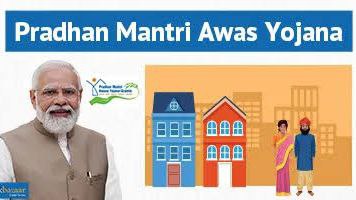
In a country where millions still struggle to secure safe and affordable housing, the Pradhan Mantri Awas Yojana (PMAY), popularly referred to as the PM Free House Scheme, stands as a transformative initiative by the Government of India. Launched in 2015 under the leadership of Prime Minister Narendra Modi, the scheme aims to provide “Housing for All” by the year 2022, with a continued focus on expanding access to housing for economically disadvantaged families.
What is the PM Free House Scheme?
The PM Free House Scheme is not entirely “free” in every case, but it offers significant financial assistance and subsidies to help low-income families own a home. It is implemented in two parts:
- PMAY-Urban (PMAY-U): For people living in urban areas.
- PMAY-Gramin (PMAY-G): For people in rural parts of India.
Under PMAY-G, for example, eligible rural families receive full financial support to build a basic home. The cost is shared between the Central and State Governments, and beneficiaries are not required to repay this money, hence the popular name: Free House Scheme.
Objectives of the Scheme
- Provide affordable and quality housing for all by ensuring pucca (permanent) houses for the underprivileged.
- Promote women’s ownership by mandating or encouraging registration of houses in the name of women.
- Include essential facilities like electricity, sanitation, LPG, drinking water, and connectivity under convergence with other government schemes.
Eligibility Criteria
To benefit from the PM Free House Scheme, applicants must:
- Belong to the Economically Weaker Section (EWS), Low-Income Group (LIG), or Scheduled Castes/Scheduled Tribes.
- Not already own a pucca house in any part of India.
- Have a valid Aadhaar card and meet income criteria set by the scheme.
For PMAY-G, households are selected based on Socio-Economic and Caste Census (SECC) data and verified through the Gram Sabha.
Achievements So Far
As of mid-2025, the PMAY scheme has:
- Sanctioned over 3 crore houses across India.
- Completed and delivered more than 2.5 crore houses to beneficiaries.
- Enabled large-scale employment in rural construction, especially for women and marginalized groups.
- Introduced sustainable housing practices using eco-friendly technologies and locally sourced materials.
Challenges and the Road Ahead
While the PM Free House Scheme has transformed lives, challenges such as land availability, local corruption, construction delays, and documentation issues still persist in some regions. The government continues to enhance transparency through AwasSoft (a dedicated online portal), mobile monitoring, and geo-tagging of construction stages.
Looking ahead, the focus remains on:
- Speeding up construction in lagging states.
- Ensuring quality housing with climate resilience.
- Empowering local communities through skill development and employment in the housing sector.
Conclusion
The PM Free House Scheme is more than a government program—it’s a social revolution that brings dignity, security, and hope to millions. By turning the dream of homeownership into a reality for the poorest citizens, it not only strengthens families but also builds a stronger, more inclusive India.